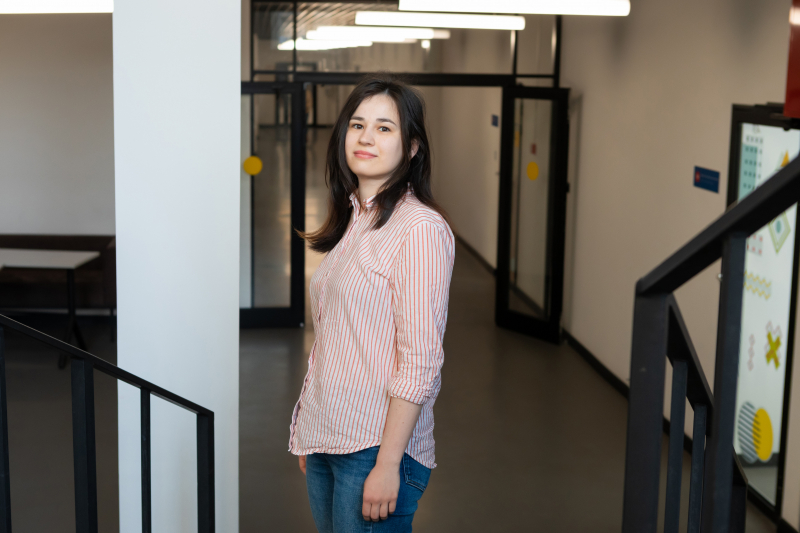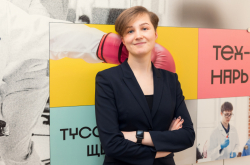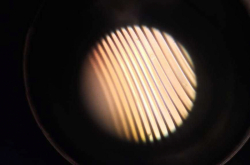What made you create your own course?
Last year, I participated in the ITMO.Mentors program. I completed a preparatory course and taught communication and team building for two semesters. That was a great experience that prompted me to run for the contest. I’ve always believed that teaching is a demanding job that requires a good deal of experience that I didn’t have yet, so I was glad to learn that I wouldn’t be alone in this – there’d be a mentor by my side. Developing your own course is an excellent way to gain experience and kickstart your career as a lecturer. I’m about to finish my Master’s studies and while my fellow students are already applying for their PhDs, I won’t enroll this year but will either hold practical and lab classes as an assistant at ITMO or work as a chemistry teacher at school.
Why did you choose biochemistry and what is it that makes your course different?
If you want to master something, teach it. I love biochemistry, but it’s a rather broad field with plenty of critical things to remember. That’s why I decided to create a course – to enrich and organize my knowledge in the field. My course includes topics that are hardly covered at university yet are crucial for overall understanding. For instance, I devoted one of my classes to the biochemistry of muscle contractions, which students are unlikely to fully understand without attending a university lecture on the bioenergetics of muscular activity. Thanks to my course, they will be able to brush up on what they’ve already learned and add new details to the big picture, thus closing any gaps in their knowledge.
What does your course cover?
At first, I aimed big in terms of my course’s content, but when I learned that I’ll have about 30 students and only six practical classes within the course, I decided to ease up a bit and focus on the material that I’m good at. Plus, I couldn’t focus exclusively on theory as it often happens in such courses, so I went with topics that could be supplemented with practical tasks, too.
When I reached out to my fellow students, I understood that even biologists think that physical chemistry is rather complex, so I decided to devote more time to explaining it. During the first class, we analyzed the physics and the chemistry behind homeostasis, namely how homeostasis works and what it has to do with cells. Then, we spoke about the biochemistry of muscle contraction. Although it’s considered a living system, the deeper we dig in, the more chemical formulas we find. And, finally, the last classes are all about protein modification, its causes and mechanisms.

Credit: photogenica.ru
How did you organize your classes?
All my classes have a similar structure. First, we repeat the previous topics, then learn a new one and discuss questions and tasks. I wanted my students to participate in the discussion because I know how hard it can be to ask a question or suggest an idea in the classroom. Perhaps they will be more comfortable with me because I’m a student just like they are.
The final task was to make a report about a scientific paper. Since research methods in molecular biology and biochemistry are a separate discipline that is hard to include in the curriculum, I asked my students to pick a paper and study its methods independently. They had to explore the methods, as well as their applications and modifications, pros and cons, and alternative options.
I wanted for students to be able to work independently and confidently with research by the end of the course. When I had to deal with scientific studies as a Bachelor’s student, I didn’t know what I should pay attention to, which ones were credible and which weren’t. I was also determined to show that biochemistry is a fascinating field that tells us about ourselves and how our body works.
How hard was it to build a course from scratch?
Before I began preparing for the classes, I couldn’t even imagine how much effort it would take. I had to gather all the relevant information, discover new things, and combine it all into a coherent and reasoned story. Luckily, I still had my training materials from my Bachelor’s years. I started off with those and then added additional information from books and courses I took and some exciting facts for the presentations.
I also had to translate parts I planned to use from English texts and reword tasks to make them gripping and easy-to-understand. I wanted my students to see that I’ve done a grand job preparing for the classes. After all, I had students with various majors and motivations: bioengineers, chemists, biotechnologists, and materials scientists. That’s why it was important to create such a course that would benefit everyone.

Maria Akhmetova. Photo by Dmitry Grigoryev / ITMO.NEWS
What should other students pay attention to if they’re eager to run their own courses?
I believe that developing your own course is a great experience that can come in handy when interviewing for a job or applying for a PhD. On top of that, it’s a great way to start teaching.
Yet it's worth keeping in mind that courses take a lot of time and effort. They should engage and interest students because no one would want to just solve problems every time. These optional courses provide room for creativity and experiment, making it possible to create something brand new.





